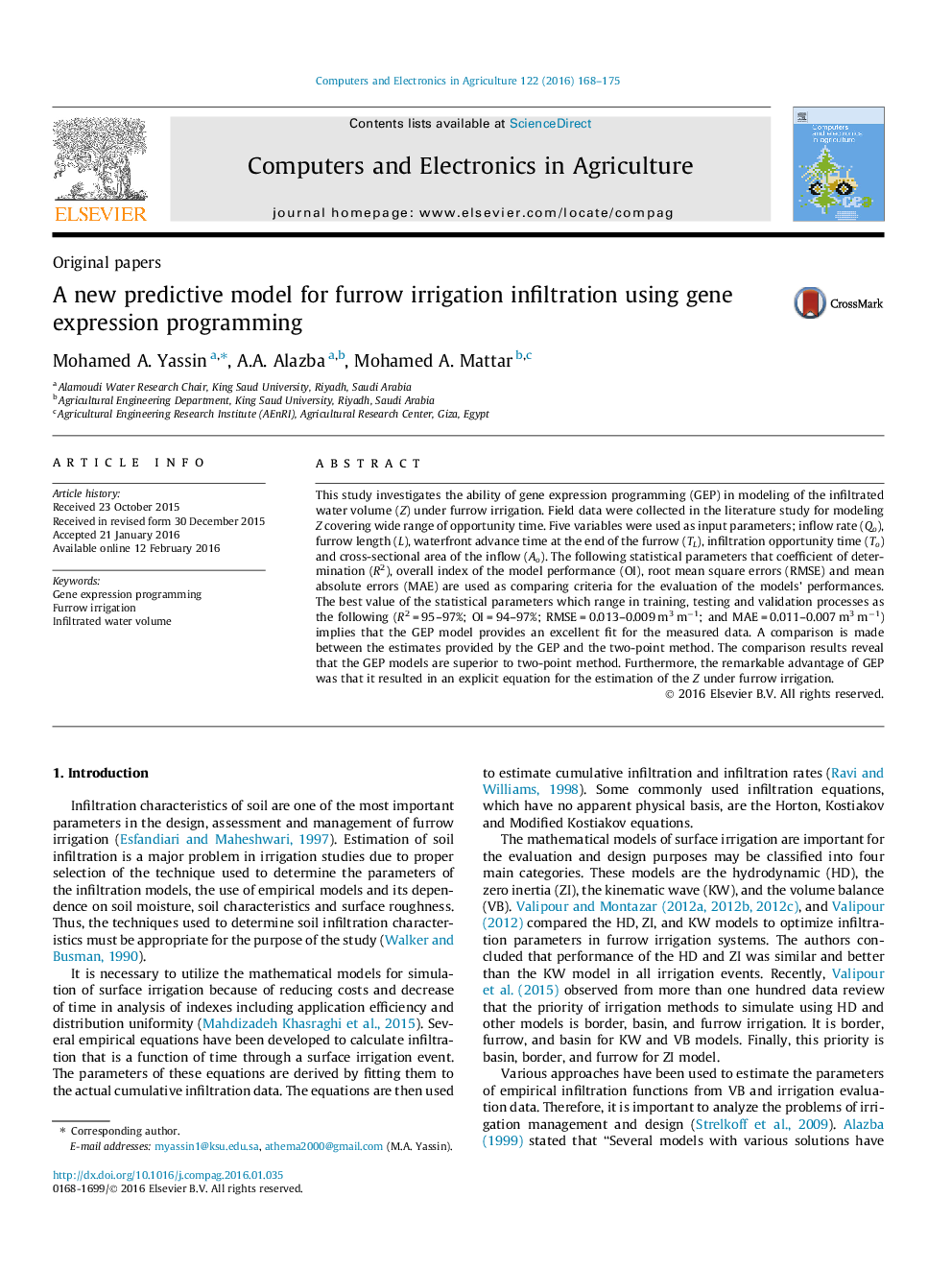| Article ID | Journal | Published Year | Pages | File Type |
|---|---|---|---|---|
| 84048 | Computers and Electronics in Agriculture | 2016 | 8 Pages |
•GEP model were developed to predict the Z under furrow irrigation.•Field data were collected in the literature study for modeling Z.•GEP are capable of predicting suitable results for the Z and given algebra formula.•The GEP models have a better performance when compared to the VBM.
This study investigates the ability of gene expression programming (GEP) in modeling of the infiltrated water volume (Z) under furrow irrigation. Field data were collected in the literature study for modeling Z covering wide range of opportunity time. Five variables were used as input parameters; inflow rate (Qo), furrow length (L), waterfront advance time at the end of the furrow (TL), infiltration opportunity time (To) and cross-sectional area of the inflow (Ao). The following statistical parameters that coefficient of determination (R2), overall index of the model performance (OI), root mean square errors (RMSE) and mean absolute errors (MAE) are used as comparing criteria for the evaluation of the models’ performances. The best value of the statistical parameters which range in training, testing and validation processes as the following (R2 = 95–97%; OI = 94–97%; RMSE = 0.013–0.009 m3 m−1; and MAE = 0.011–0.007 m3 m−1) implies that the GEP model provides an excellent fit for the measured data. A comparison is made between the estimates provided by the GEP and the two-point method. The comparison results reveal that the GEP models are superior to two-point method. Furthermore, the remarkable advantage of GEP was that it resulted in an explicit equation for the estimation of the Z under furrow irrigation.
